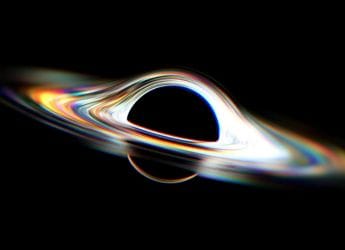- Home
- Science
- Science News
- NASA's New TESS Telescope Shares First Image in Hunt for New Worlds
NASA's New TESS Telescope Shares First Image in Hunt for New Worlds

Photo Credit: NASA/MIT/TESS
TESS took this image of the Large Magellanic Cloud (right) and the bright star R Doradus (left)
NASA's newest planet hunter telescope, the Transiting Exoplanet Survey Satellite (TESS), has now shared the first image that it captured as part of its initial round of data collection.
Part of the data from TESS' initial science orbit includes a detailed picture of the southern sky taken with all four of the spacecraft's wide-field cameras, NASA said in a statement on Monday.
This image captures a wealth of stars and other objects, including systems previously known to have exoplanets.
"In a sea of stars brimming with new worlds, TESS is casting a wide net and will haul in a bounty of promising planets for further study," said Paul Hertz, Astrophysics Division Director at NASA headquarters in Washington.
"This first light science image shows the capabilities of TESS' cameras, and shows that the mission will realise its incredible potential in our search for another Earth," Hertz said.
TESS acquired the image using all four cameras during a 30-minute period on August 7, NASA said.
The images include parts of a dozen constellations, from Capricornus to Pictor, and both the Large and Small Magellanic Clouds, the galaxies nearest to our own.
"This swath of the sky's southern hemisphere includes more than a dozen stars we know have transiting planets based on previous studies from ground observatories," said George Ricker, TESS principal investigator at the Massachusetts Institute of Technology's (MIT) Kavli Institute for Astrophysics and Space Research in Cambridge.
TESS's cameras monitor large swathes of the sky to look for transits. Transits occur when a planet passes in front of its star as viewed from the satellite's perspective, causing a regular dip in the star's brightness.
TESS builds on the legacy of NASA's Kepler spacecraft, which also uses transits to find exoplanets.
Its target stars are 30 to 300 light-years away and about 30 to 100 times brighter than Kepler's targets, which are 300 to 3,000 light-years away.
The spacecraft launched from NASA's Kennedy Space Center in Cape Canaveral, Florida, on April 18 aboard a SpaceX Falcon 9 rocket and used a flyby of the Moon on May 17 to head toward its science orbit.
It started collecting scientific data on July 25 after a period of extensive checks of its instruments, NASA said.
Get your daily dose of tech news, reviews, and insights, in under 80 characters on Gadgets 360 Turbo. Connect with fellow tech lovers on our Forum. Follow us on X, Facebook, WhatsApp, Threads and Google News for instant updates. Catch all the action on our YouTube channel.
Related Stories
- Samsung Galaxy Unpacked 2025
- ChatGPT
- Redmi Note 14 Pro+
- iPhone 16
- Apple Vision Pro
- Oneplus 12
- OnePlus Nord CE 3 Lite 5G
- iPhone 13
- Xiaomi 14 Pro
- Oppo Find N3
- Tecno Spark Go (2023)
- Realme V30
- Best Phones Under 25000
- Samsung Galaxy S24 Series
- Cryptocurrency
- iQoo 12
- Samsung Galaxy S24 Ultra
- Giottus
- Samsung Galaxy Z Flip 5
- Apple 'Scary Fast'
- Housefull 5
- GoPro Hero 12 Black Review
- Invincible Season 2
- JioGlass
- HD Ready TV
- Laptop Under 50000
- Smartwatch Under 10000
- Latest Mobile Phones
- Compare Phones
- OnePlus 15R
- Realme Narzo 90x 5G
- Realme Narzo 90 5G
- Vivo S50 Pro Mini
- Vivo S50
- OPPO Reno 15c
- Redmi Note 15 5G
- Redmi Note 15 Pro 5G
- Asus ProArt P16
- MacBook Pro 14-inch (M5, 2025)
- Infinix Xpad Edge
- OnePlus Pad Go 2
- OnePlus Watch Lite
- Just Corseca Skywatch Pro
- Acerpure Nitro Z Series 100-inch QLED TV
- Samsung 43 Inch LED Ultra HD (4K) Smart TV (UA43UE81AFULXL)
- Asus ROG Ally
- Nintendo Switch Lite
- Haier 1.6 Ton 5 Star Inverter Split AC (HSU19G-MZAID5BN-INV)
- Haier 1.6 Ton 5 Star Inverter Split AC (HSU19G-MZAIM5BN-INV)

















